Product Design Projects
Hands-on design work showcasing my approach to solving complex user problems
My Process
A structured approach to creating meaningful digital experiences
Discover & Research
Understanding users, context, and constraints through interviews, surveys, and analytics
Define & Synthesize
Translating insights into design opportunities and clear problem statements
Design & Prototype
Creating solutions through ideation, wireframing, and interactive prototyping
Test & Iterate
Validating solutions through usability testing and continuous refinement
Continuous iterative process
Case Studies
Demonstrating my problem-solving approach through research-driven design solutions
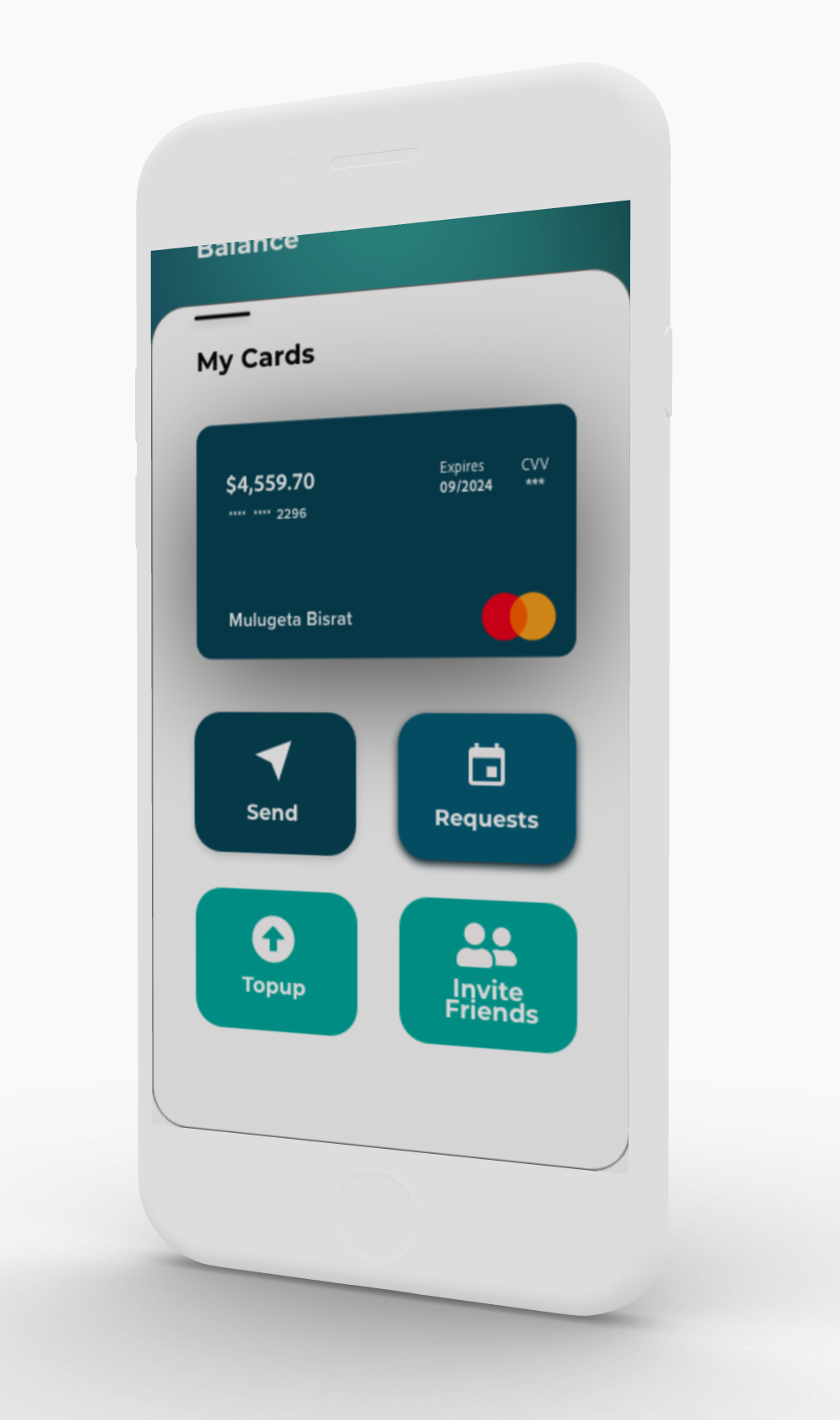
FinTech Mobile App
SabaPay
Mobile Payment Platform for Cross-Border Transactions
Problem Statement
Small to medium business owners (20 employees or less) in East Africa lacked reliable, affordable payment platforms for cross-border transactions. Existing solutions had expensive fees ($30+ per transaction), long processing times (7-10 days), and poor user experiences.
My Problem-Solving Approach
Conducted interviews and empathy mapping with target users. Created detailed personas and journey maps to identify core pain points. Designed with cultural context in mind, focusing on simplicity and trust-building for low digital literacy users.
1. Problem Statement
The Challenge
Small to medium business owners in East Africa faced significant barriers when conducting cross-border payments. Traditional remittance services and banks imposed high fees, lengthy processing times, and complex procedures that hindered business growth and financial inclusion.
Market Analysis
- • 68% of SMEs in East Africa rely on informal money transfer
- • Average transaction cost: 12-15% of transfer amount
- • 45% of businesses delayed payments due to high costs
- • Low digital literacy rates among target demographic
Business Impact
- • Reduced profit margins by 10-15%
- • Cash flow disruptions affecting operations
- • Limited ability to scale across borders
- • Reliance on risky informal channels
2. Research to Understand Root Issues
Research Methodology
🔍 Primary Research
- • 24 in-depth interviews with SME owners
- • 3 focus groups in Kenya, Ethiopia, Uganda
- • Observational studies at money transfer locations
- • Survey of 150+ business owners across region
📊 Secondary Research
- • Competitive analysis of 12 existing solutions
- • Financial inclusion reports and data
- • Mobile usage patterns in East Africa
- • Regulatory framework analysis
Key Research Insights
Trust is Critical
78% of users prioritize trust and security over convenience. Previous bad experiences with digital payments created skepticism.
Mobile-First Necessity
89% of target users access internet primarily through mobile. Desktop solutions are not viable for this market.
Simplicity Over Features
Users preferred fewer features done well over complex multi-feature apps. Clear, simple flows were essential.
User Personas
Alex Grassimov
Game Designer, CEO • Toronto/Ethiopia
Saba Kahsay
Civil Engineer, Trader • Dubai/Ethiopia
3. My Problem-Solving Approach
Design Strategy
Based on research insights, I developed a human-centered design approach focusing on trust-building, cultural sensitivity, and progressive disclosure of features to accommodate varying levels of digital literacy.
Core Design Principles
Transparency Above All
Every fee, every step, every timeline clearly communicated upfront
Cognitive Load Reduction
One primary action per screen, minimal text, clear visual hierarchy
Recovery & Error Prevention
Clear error states, undo options, and confirmation steps for critical actions
4. Prototypes, Mockups & Iterations
Design Process Flow
Figma Design System & Components
🎨 Design System Architecture
Foundation Elements
- • Color palette with cultural considerations
- • Typography system for multiple languages
- • Spacing and grid system
- • Iconography library
Component Library
- • Form inputs with validation states
- • Button variants and states
- • Card components for transactions
- • Navigation and status components
Major Design Iterations
Onboarding Simplification
Initial version had 7-step onboarding. User testing showed 60% drop-off by step 4.
Fee Transparency Redesign
Users expressed distrust when fees were shown only at final confirmation step.
Cultural Color Adaptation
Original blue color scheme tested poorly in focus groups due to cultural associations.
Prototyping & User Testing Approach
Testing Methods
- • Moderated usability testing (18 participants)
- • Unmoderated remote testing via Maze
- • A/B testing of key flows
- • Accessibility testing with screen readers
Key Metrics Tracked
- • Task completion rate
- • Time to complete core transactions
- • Error rate and recovery success
- • System Usability Scale (SUS) scores
5. Final Solution & Impact
Delivered Solution
Cross-Border Payment Platform for East African SMEs
Core Features
- • Instant cross-border payments
- • Competitive exchange rates with transparent fees
- • Multi-currency wallet support
- • Transaction tracking and history
- • Recipient management system
Design Innovation
- • Cultural-context aware interface
- • Progressive onboarding system
- • Trust-building visual design
- • Offline-capable core features
- • Multi-language support
Measurable Impact
Business & Market Impact
User Feedback
"Finally, a payment app that understands our needs. I can pay my Ethiopian team without worrying about hidden fees or delays."
"The interface is so simple my grandmother could use it. And the fees are transparent - no surprises at the end."
Want to see the complete design process?
Explore the full case study with detailed wireframes, user flows, and visual design evolution on Behance
View Full Case Study on BehanceComplete visual documentation with interactive prototypes
My Design Process Summary
Lumos
AI-Powered Bicycle Safety Light
Problem Statement
Urban cyclists lack reliable ways to signal intentions and maintain visibility at night. Existing solutions are either too complex, require unsafe hand-off-handlebar operation, or fail to integrate with natural cycling behaviors, leading to safety concerns and low adoption rates.
My Problem-Solving Approach
Conducted user research with 12 cyclists, mapped pain points in ride journeys, and used Wizard of Oz testing to validate AI interaction concepts before development. Focused on gesture-based interaction and mobile sync through iterative prototyping.
AI-Powered Bicycle Safety Light
1. Problem Statement
The Challenge
Urban cyclists lack reliable ways to signal intentions and maintain nighttime visibility. Current solutions force unsafe choices: take hands off handlebars to signal manually, or rely on basic lights that don't communicate intent.
2. Research to Understand Root Issues
📋 User Interviews (12 participants)
- • 6 daily commuters, 6 recreational riders
- • Ages 22-45, mixed experience levels
- • Focus: safety pain points, current device usage
- • Key insight: Confidence directly linked to visibility
🔍 Observational Studies (20 hours)
- • Night ride safety behavior analysis
- • Hand signal usage documentation
- • Traffic interaction patterns
- • Key insight: Signaling must be as natural as gestures
🎯 Root Issue Identification
The core problem isn't just visibility—it's the cognitive load and safety compromise required to communicate intent while cycling. Users need an intelligent system that understands cycling behavior and automates safety communication.
3. My Problem-Solving Approach
Design Strategy
Instead of creating another manual bike light, I focused on developing an AI-powered system that learns from natural cycling behaviors and automates safety communication.
User Journey & Pain Point Mapping
Setup
Install device and pair with mobile app
Pre-Ride
Check battery and configure settings
Riding
Signal turns and maintain visibility
Emergency
Alert others of sudden stops
Post-Ride
Review data and charge
4. Prototypes, Mockups & Iterations
Figma Prototypes & UI Design
Screen Layout Specifications
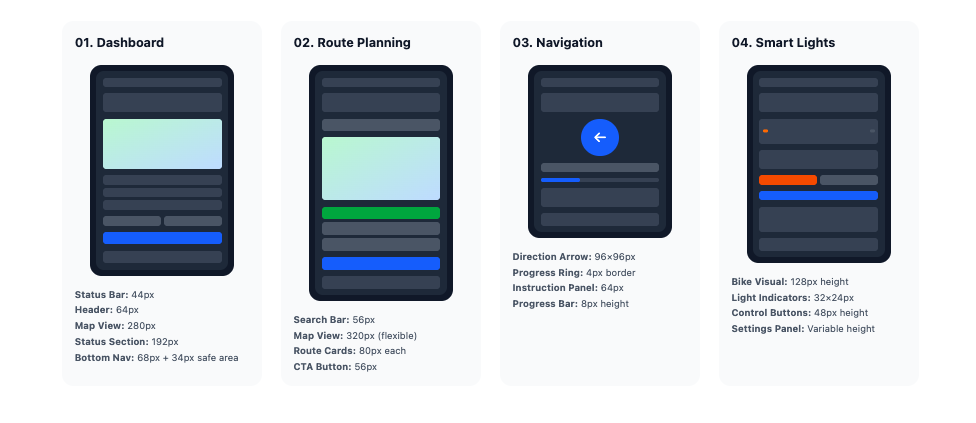
Wireframe Evolution & User Flow
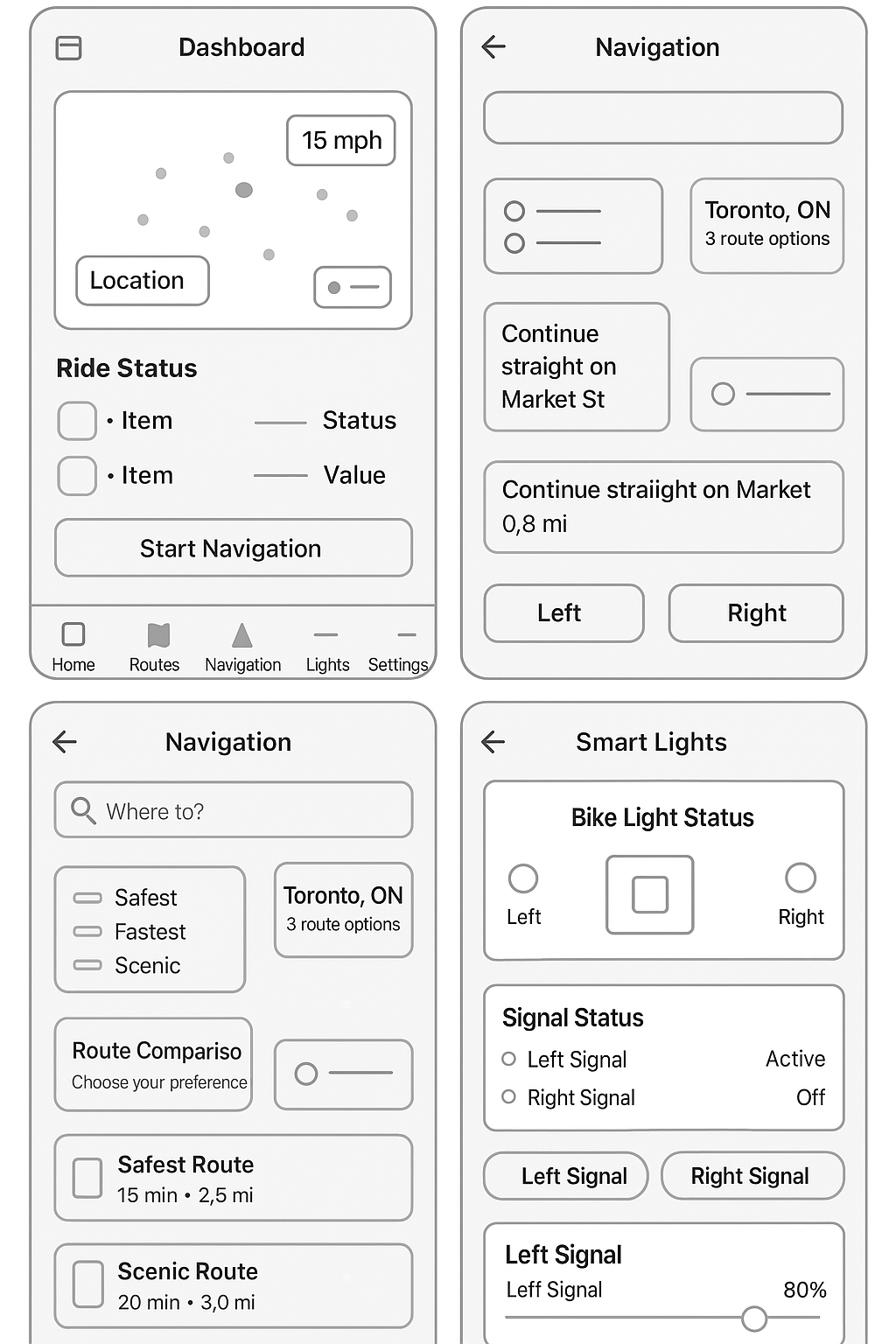
Complete wireframe user flow showing the Lumos app navigation and key interactions
Mobile App Evolution: Wireframes → High-Fidelity
Mobile App Evolution: Wireframes → High-Fidelity
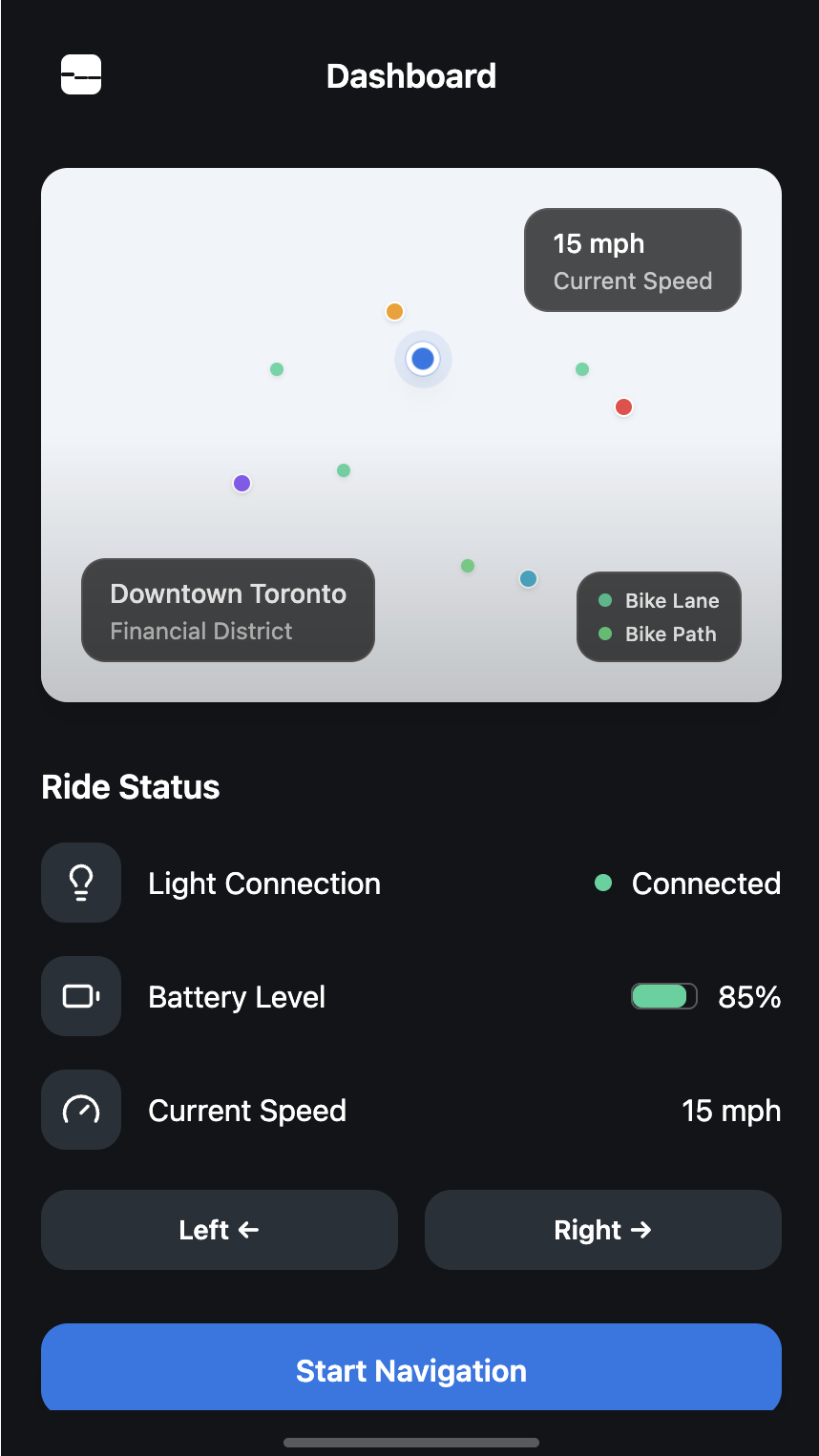
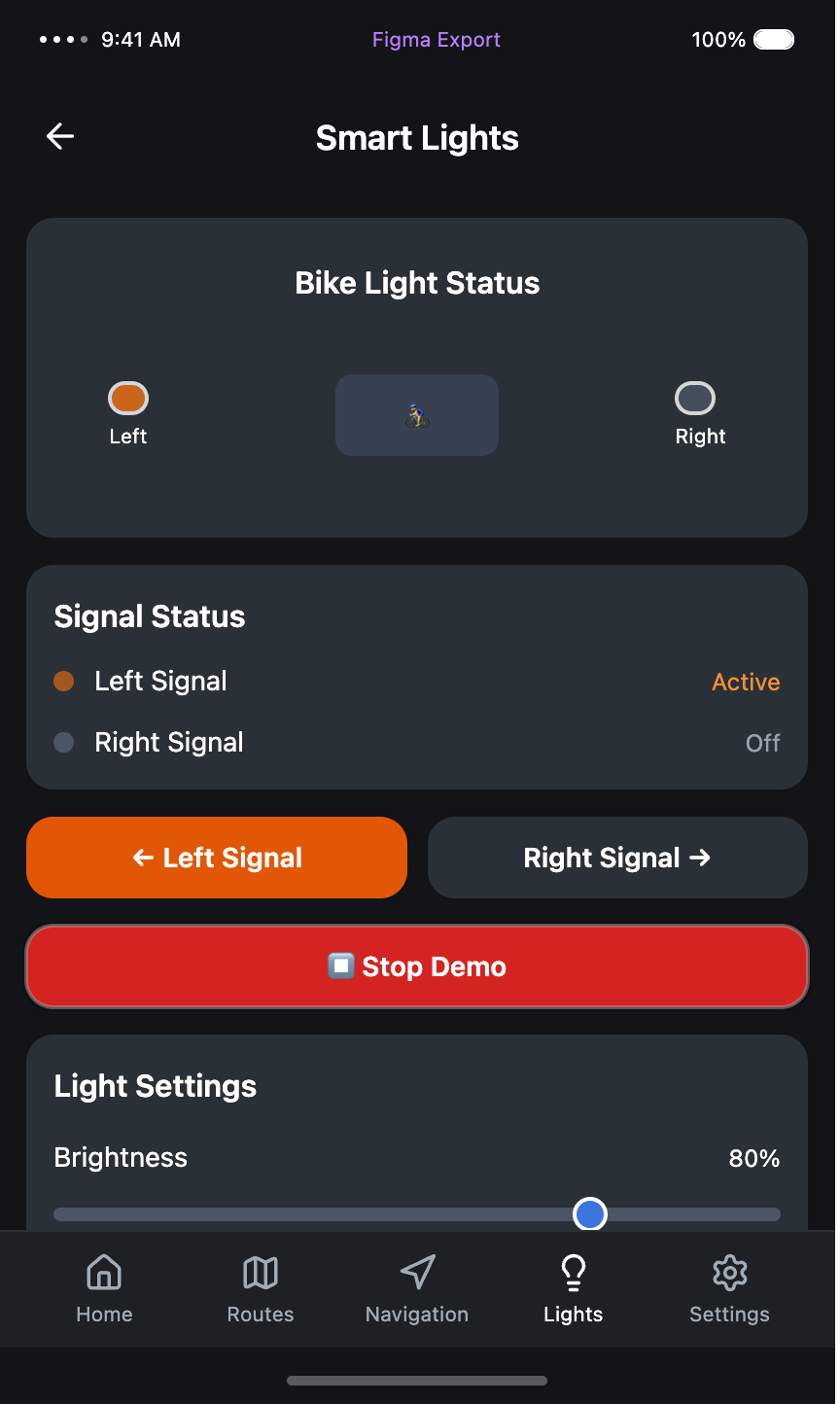
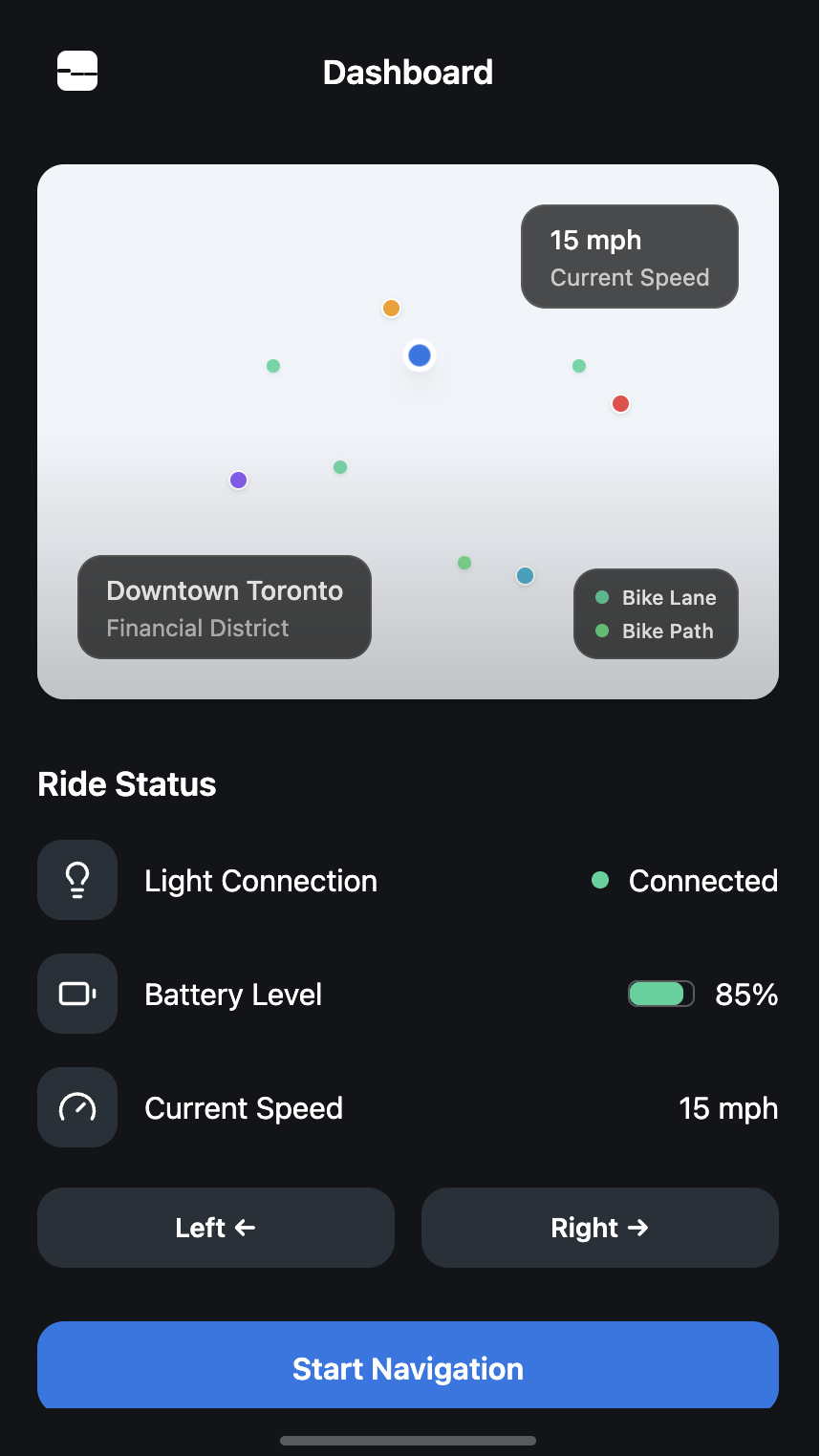
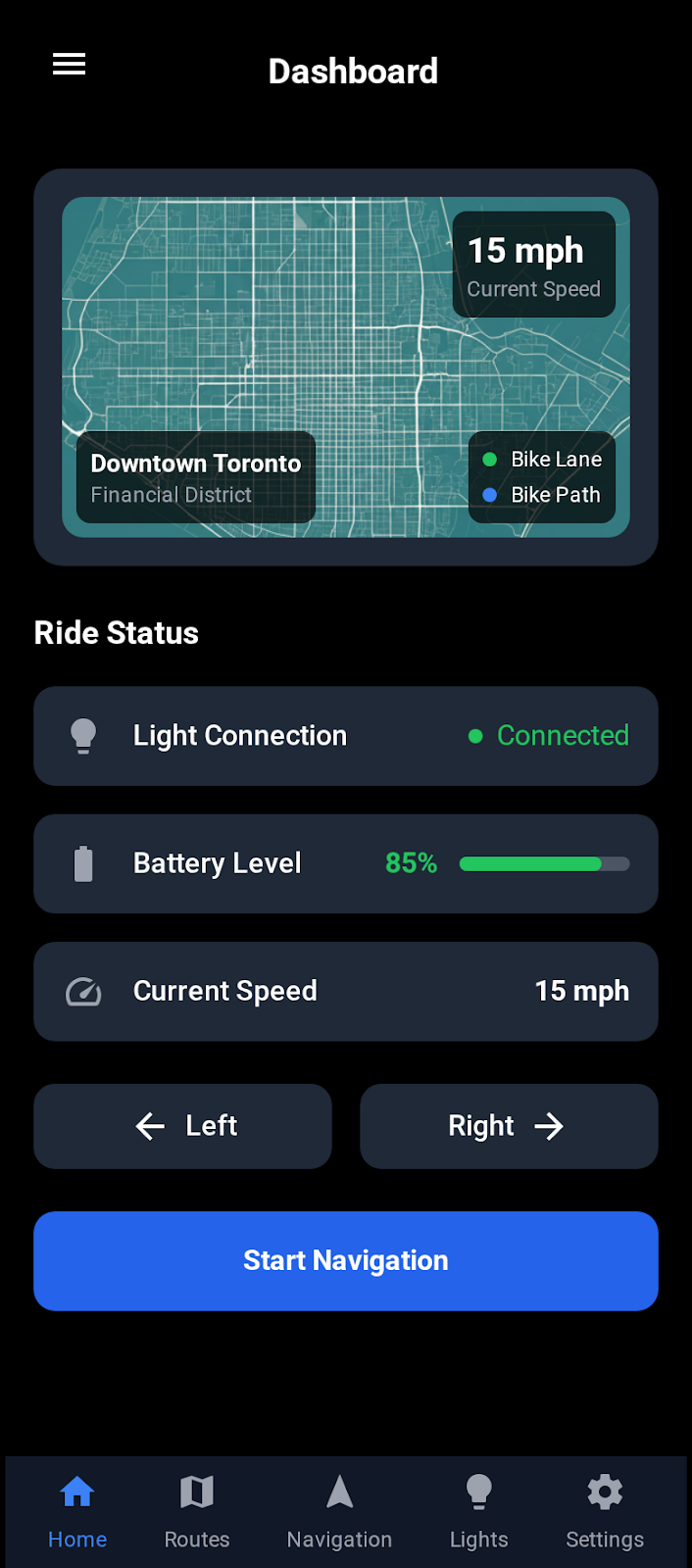
Figma Interactive Prototypes
Device Pairing Flow
- • Bluetooth discovery animation
- • Connection status feedback
- • Error state handling
- • Success confirmation
Gesture Training Module
- • Step-by-step gesture tutorials
- • Real-time gesture recognition
- • Calibration adjustments
- • Practice mode with feedback
🎯 Interactive Demo
Try the full Lumos app prototype with real interactions
Three Major Design Iterations
Hardware-First Approach
Initial focus on creating a robust physical device with basic light patterns and manual controls.
App-Centric Integration
Added comprehensive mobile app with gesture training, customization, and manual control options.
AI-Powered Intelligence
Implemented machine learning for predictive safety features, adaptive lighting, and automatic gesture recognition.
Wizard of Oz Testing Approach
I used Wizard of Oz testing to simulate AI behavior before building machine learning models, allowing validation of user interactions with "smart" features early in the design process.
Test Scenarios
- • Gesture recognition for turn signals
- • Automatic brake light activation
- • Emergency hazard detection
- • Ambient light adjustment
Key Validation Points
- • 3-5 second gesture timeout optimal
- • Users preferred subtle feedback
- • Manual override essential for trust
- • False positives caused frustration
5. Final Solution & Impact
Delivered Solution
AI-Powered Bicycle Safety System
Core Features
- • Gesture-based turn signal recognition
- • Automatic brake light detection
- • Adaptive brightness based on conditions
- • Emergency hazard alert system
Technical Innovation
- • Computer vision gesture recognition
- • Multi-sensor fusion (IMU, camera, light)
- • Edge AI processing for real-time response
- • 30+ hour battery with solar assist
Measurable Impact
Business & Industry Impact
My Design Process Summary
IMFTO
It's My Future Toronto - Youth Engagement Platform
Problem Statement
Indigenous, Black, and POC youth (ages 8-12) in Toronto needed a platform to share their ideas for city recovery from COVID-19, but existing solutions had barriers that hindered caregiver and youth engagement, complex interfaces, and poor registration experiences.
My Problem-Solving Approach
Conducted user research with stakeholder interviews and digital surveys. Created personas for both caregivers and youth, then designed a cohesive interface bridging two seemingly opposite audiences through simplified registration and engaging video upload features.
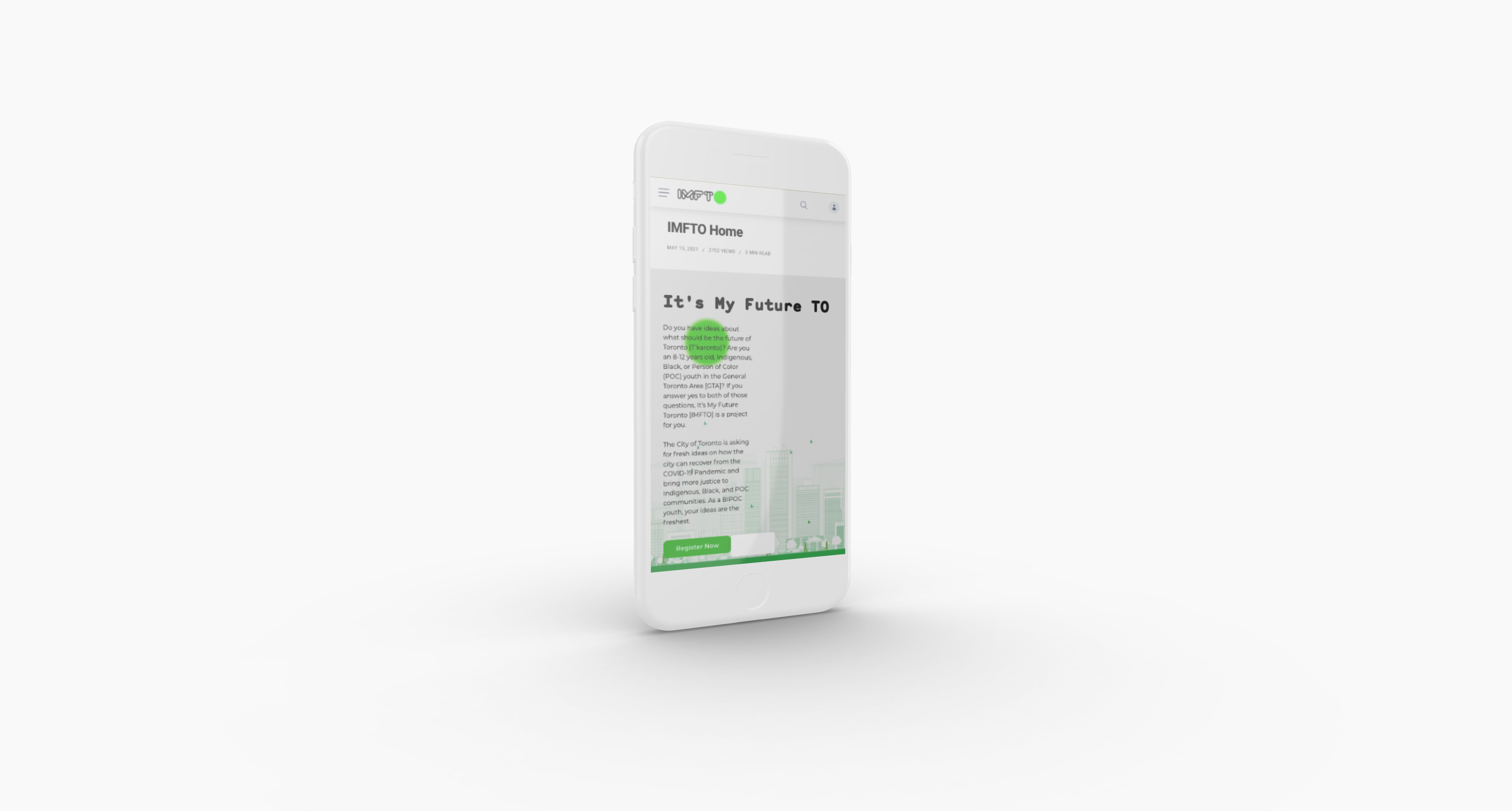
1. Problem Statement
The Challenge
Toronto needed a unique program bringing together education, industry, and government to deploy a mobile application for Indigenous, Black, and POC youth (ages 8-12) to showcase their ideas on city recovery from COVID-19 pandemic.
2. Research to Understand Root Issues
Research Methods
🔍 User-Centric Design Approach
- • One-on-one usability testing sessions
- • Key stakeholder interviews
- • Digital surveys for attitude and preference insights
- • Focus on understanding dual user needs
📊 Research Outcomes
- • Better user engagement strategies identified
- • Increased registration and involvement pathways
- • Program success framework established
- • Barrier elimination opportunities mapped
Key Pain Points Identified
Video Upload Issues
Video upload page is not intuitive and user friendly
High Drop-off Rate
Increased user drop off rate during registration process
Navigation Problems
Workshop registration page is hard to navigate
Confusing Interface
Registration button and account login are confusing
3. User Personas (Research-Based)
Susan
Age: 37
Education: Bachelor's degree in social work
Hometown: Toronto
Family: 2 kids
Occupation: Social worker
"There is always a solution"
When Susan isn't at work, she is firstly a mother at home. She loves spending time with her children and spouse to keep them happy. She wants her son to take part in the IMFTO program. Susan wants to be able to register as a caregiver allowing her son to have a separate login credentials which she can monitor.
Goals
- • To register her son and as a caregiver
- • To be able to monitor account activity
- • Support her son's entrepreneurial inclination
- • Ensure safe participation in the program
Frustrations
- • Unable to see what other activities are within different accounts
- • Complex registration process
- • Lack of parental control features
- • Poor visibility into child's platform usage
Problem Statement
Susan is a mother of a 9 years old son who needs to be taking part in the IMFTO program because she believes her son has entrepreneurial inclination.
4. Design Process & Prototypes
5-Phase Design Process
User Journey Mapping
Paper to Digital Wireframes Evolution
Paper Wireframes
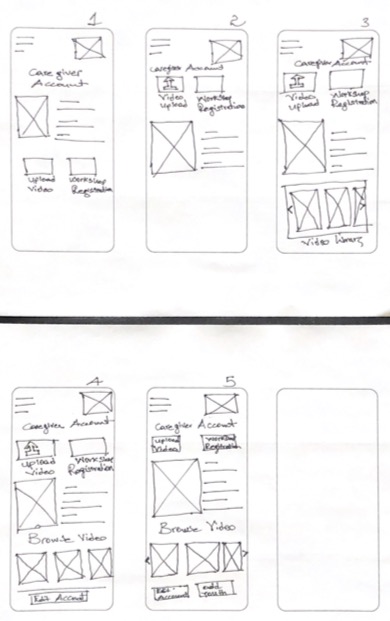
Iterating paper wireframe design with goal of implementing recommendations from user feedback
Digital Wireframes
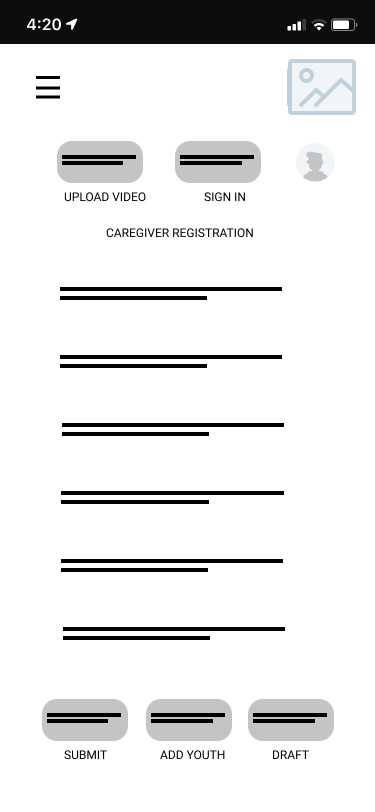
Based on user testing, draft button was added to prevent user drop-off
Key Wireframe Screens
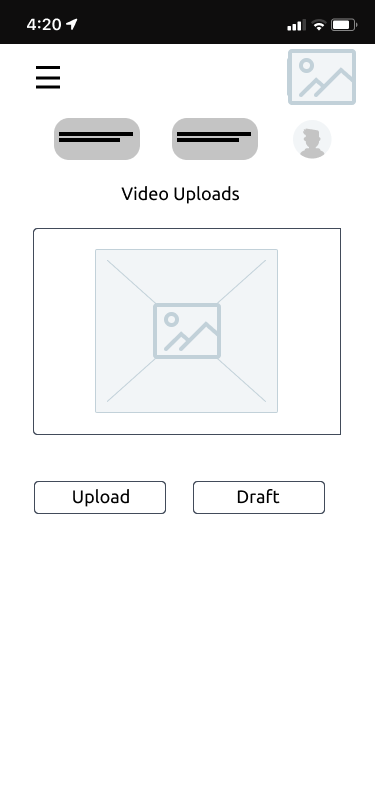
Video Upload
Simplified video upload interface with draft functionality
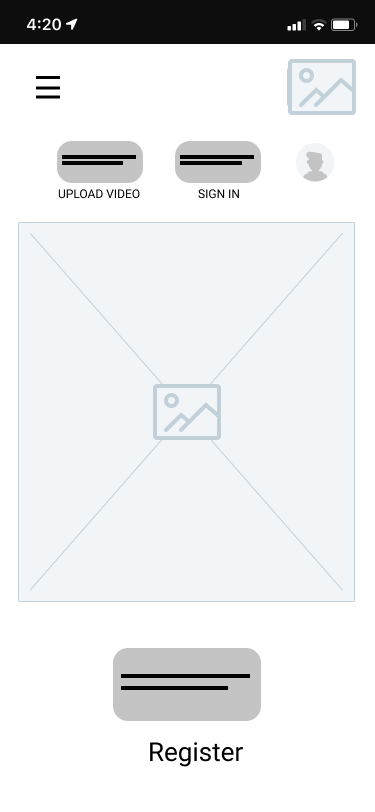
Home & Registration
Main landing page with clear registration call-to-action

Caregiver Registration
Comprehensive form with submit, add youth, and draft options
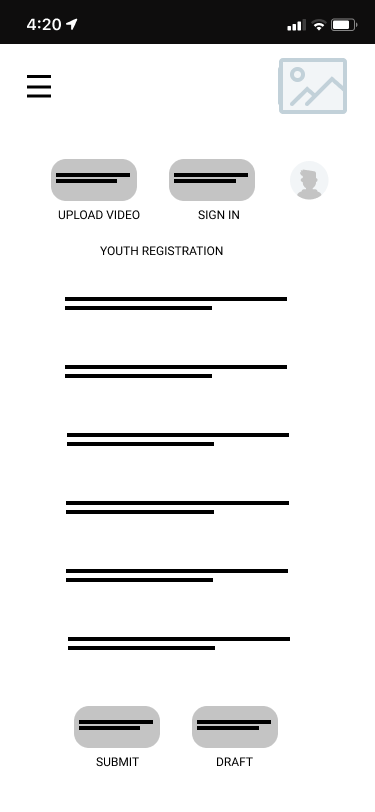
Youth Registration
Simplified registration form for youth participants
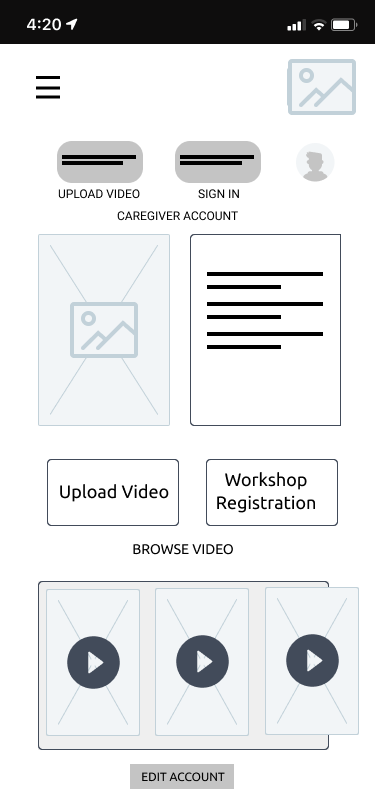
Caregiver Account
Dashboard with video browsing and workshop registration
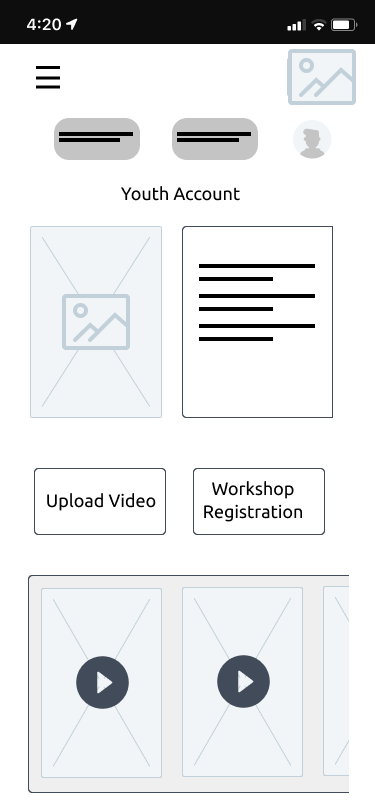
Youth Account
Child-friendly interface for video uploads and workshops
Authentication Flow
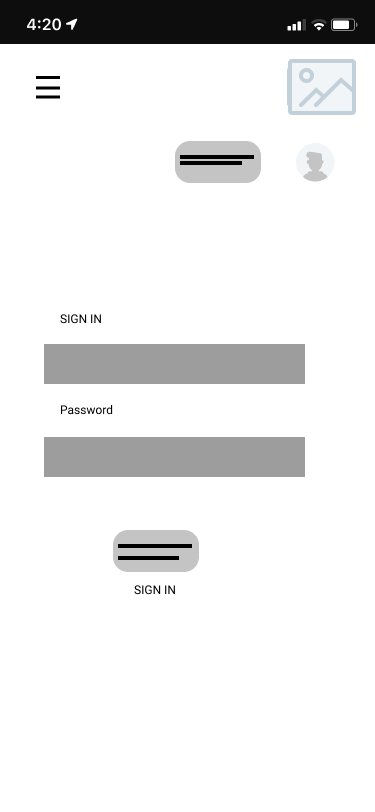
Simple Sign In
Streamlined login with minimal fields
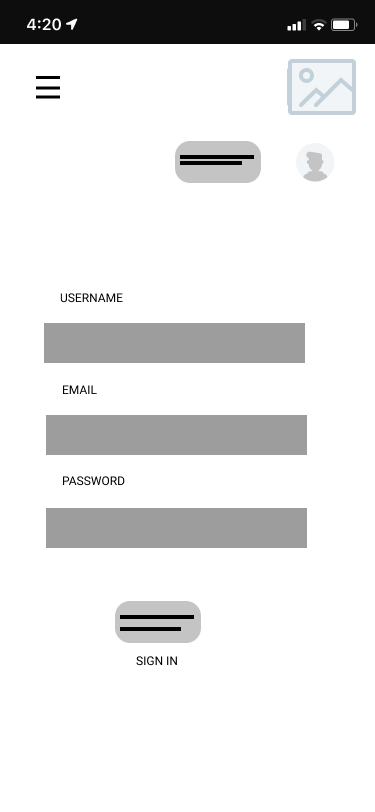
Extended Sign In
Comprehensive login with username, email, and password
Key Wireframe Design Decisions
Registration Flow
- • Separate caregiver and youth registration paths
- • Draft functionality to prevent drop-offs
- • Clear progress indicators throughout
- • Multiple action buttons (Submit, Add Youth, Draft)
User Experience
- • Consistent navigation across all screens
- • Video-first interface design
- • Age-appropriate interfaces for youth accounts
- • Parental oversight features for caregivers
Final High-Fidelity Mockups
Registration & Authentication
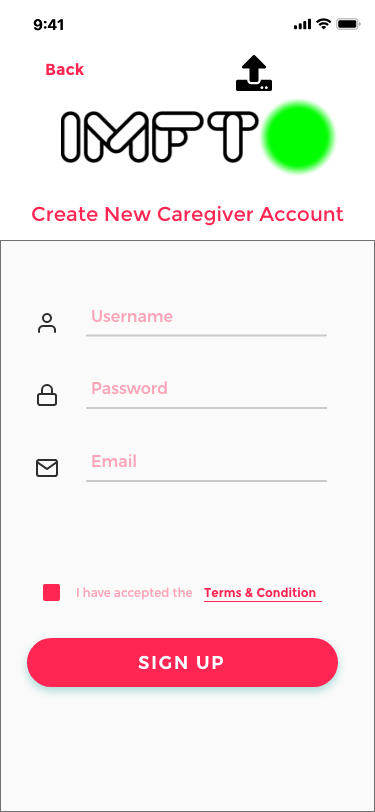
Caregiver Registration
Clean registration form with clear visual hierarchy and terms acceptance

Sign In Interface
Streamlined login with clear navigation to registration
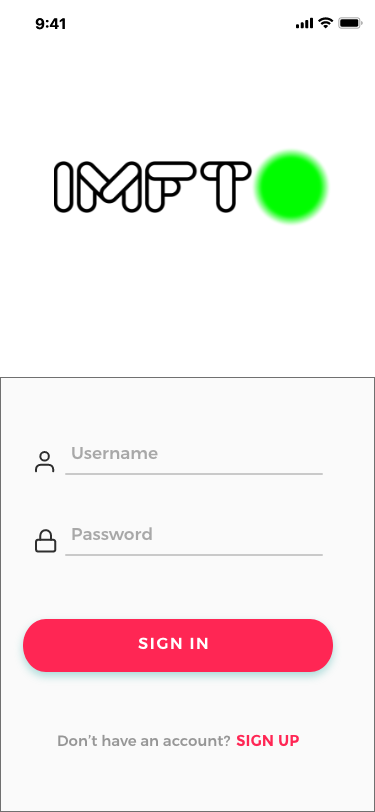
Landing Page
Engaging home screen with clear call-to-action and program description
Account Management

Caregiver Dashboard
Parent account with video browsing and profile management
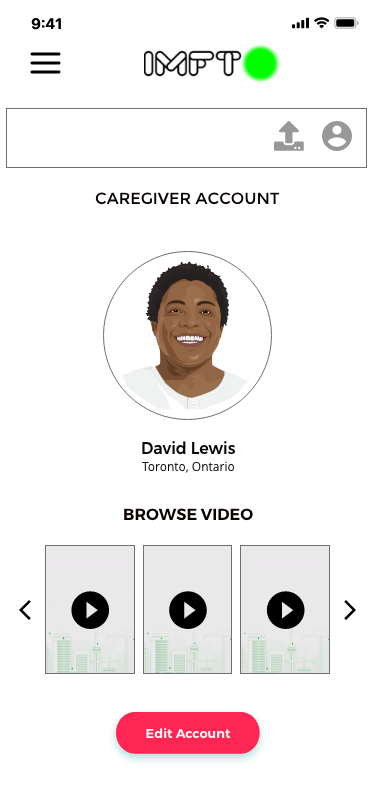
Youth Dashboard
Child-friendly interface with video gallery and account controls
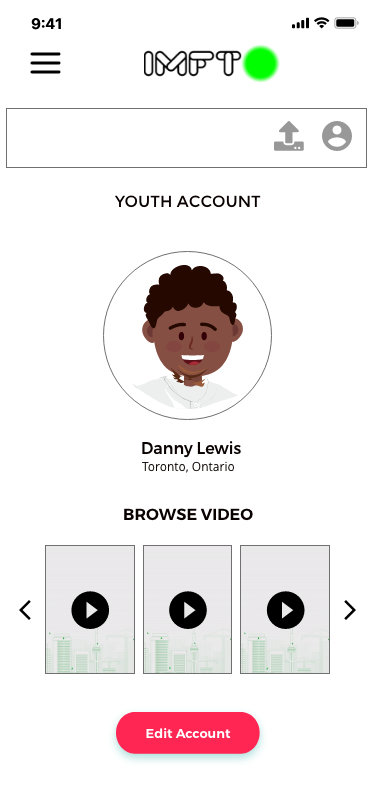
Simplified Caregiver View
Streamlined parent interface with essential actions
Video Features
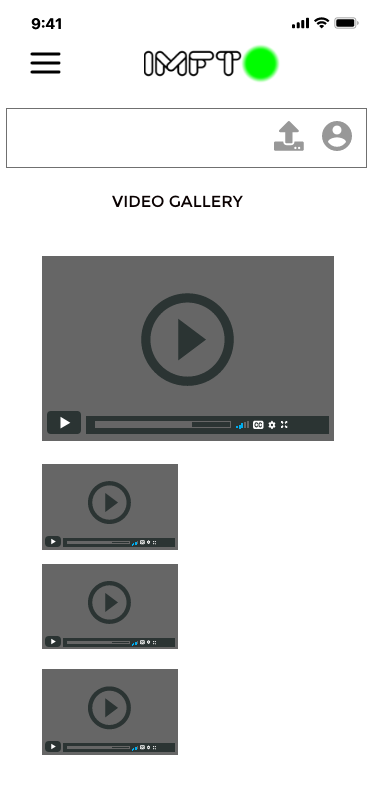
Video Gallery
Comprehensive video browsing with multiple video formats and controls
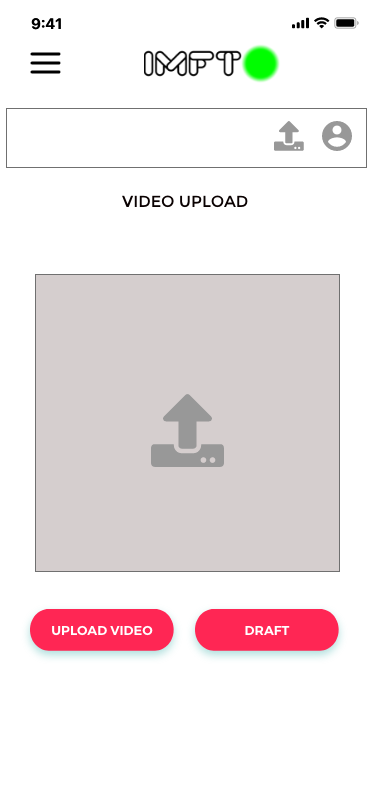
Video Upload Interface
Intuitive upload process with draft functionality
Mobile Experience
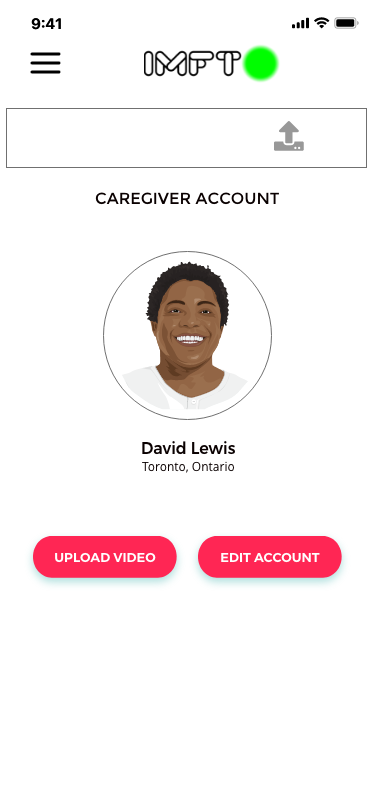
Mobile Landing Page
Optimized mobile experience maintaining full functionality
Design System Highlights
Visual Identity
- • Bright green accent color for energy
- • Clean, modern typography
- • Consistent IMFTO branding
- • Toronto cityscape illustrations
User Experience
- • Age-appropriate interfaces
- • Clear navigation patterns
- • Accessible color contrasts
- • Intuitive icon usage
Functionality
- • Dual account types
- • Video upload/browsing
- • Profile management
- • Draft save functionality
Usability Study Findings
Round 1 Findings
Round 2 Findings
Figma Interactive Prototypes
Device Pairing Flow
- • Bluetooth discovery animation
- • Connection status feedback
- • Error state handling
- • Success confirmation
Gesture Training Module
- • Step-by-step gesture tutorials
- • Real-time gesture recognition
- • Calibration adjustments
- • Practice mode with feedback
🎯 IMFTO Demo
Play Demo
Design Audit Report
Access my comprehensive design audit analysis and recommendations
Protected Content
Please enter the password to access the Design Audit Report
Incorrect password. Please try again.
Access Granted
You can now download the Design Audit Report
Design Audit Report
Comprehensive analysis of user experience, interface design, and improvement recommendations.
Let's Connect
Ready to discuss your next product challenge or explore collaboration opportunities?
Visit Portfolio
Explore my complete work
Send Email
Drop me a message anytime
Connect on LinkedIn
Let's network professionally
Available for freelance projects and full-time opportunities